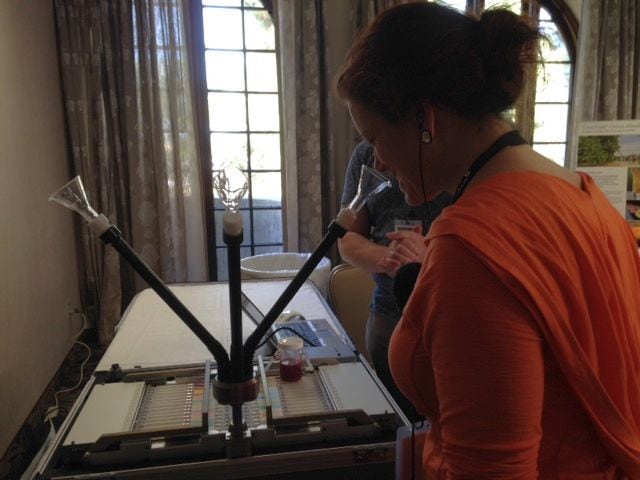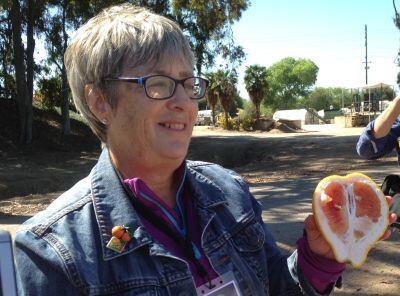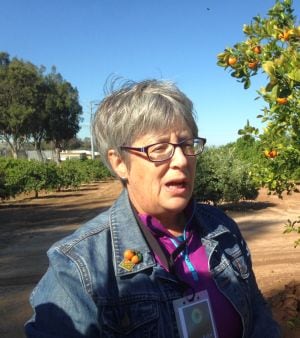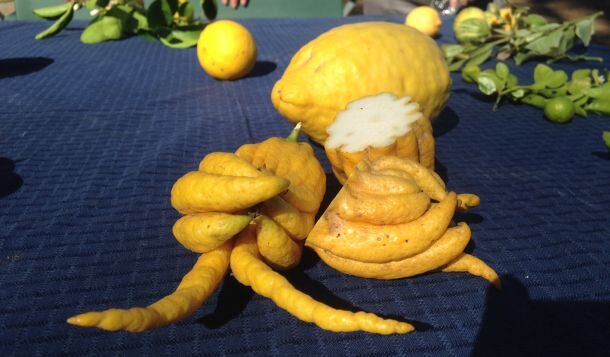If you don’t believe oranges are that interesting, sample just a fraction of the 1,000+ varieties in the UCR citrus variety collection and it will blow your mind as well as tickle your taste-buds, says Givaudan, which has just unveiled a new flavor collection drawing heavily upon its decade-long collaboration with UCR.
An unparalleled group of citrus fruits that has been lovingly curated since 1910, the UCR collection is sometimes referred to as the Noah’s Ark of citrus in that it houses two plants of each variety (plus backups in the greenhouse (in case citrus greening disease strikes) from citrus trees spanning the globe.
Indeed, it is so extensive that even after 10 years of mining the collection’s secrets, flavorists at Givaudan say they are still barely scratching the surface when it comes to unlocking its true potential as a resource for developing new flavors.
It’s precise, and it’s reproducible
So how does the collaboration work?
The fruits grown at UCR do not in themselves get transformed into flavors, but provide a kind of sensory library of possibilities that Givaudan’s flavorists capture, and then replicate using raw materials from commercially grown citrus varieties and other natural ingredients, from blossom to fruits outside the citrus family.
And capturing the unique flavor footprint of a novel fruit variety has never been easier, thanks to new techniques and equipment that have transformed the flavor development process at Givaudan in recent years, says Geoff Marshall Hill, principal flavorist.
“You cut off some peel, seal it in a glass container, pump in some air to release the volatiles [which are associated with aroma] collect them in an absorbent material and analyze what is in there. You can separate out non-volatile components [which are more associated with taste] using liquid chromatography and you have a flavor profile.”
A customer in Tokyo can smell exactly what we’re working on, and give immediate feedback
But that’s the science. Givaudan’s proprietary miniVAS (virtual aroma synthesizer) machine adds the art, by allowing flavorists to replicate the flavor by using oils, essences and other flavor components from multiple natural sources, and then compare it directly with the source material.

The flavor is built from up to 30 different attributes (eg. zesty lime, woodiness, carroty), flavor building blocks which are loaded into cartridges in the miniVAS. Air is passed through a central column that they all join and the aroma makes its way up into a plastic nozzle into your nose.
You can then dial up the woodiness, dial down the orange blossom, dial up the sulfurous notes and so on, until you hit upon a profile you like, and then save that profile (which logs the exact ratios of all of those building blocks) in a computer file, said Marshall Hill.
“It’s precise, and it’s reproducible.”
Rapid flavor iteration
It’s also fast. A Givaudan flavorist sitting with a customer on the other side of the world, could then access that file, program his miniVAS machine to the same settings, and be able to smell exactly what his colleagues 3,000 miles away can smell, at the same time.
“A customer in Tokyo can smell exactly what we’re working on, and give immediate feedback,” said Marshall-Hill. “We can then keep making adjustments, smelling exactly what the other party is smelling, until we get it right.”

Givaudan is celebrating the 10th anniversary of its customer TasteTrek Citrus program with an anniversary global flavor collection inspired by a decade of exploring citrus groves around the world.
The collection includes Ponkan Mandarin (think orange candy), Castagnano Bergamot (think citrus combined with Earl Grey tea), Delhi Lime (inspired by lime-based beverages sold on the street in Delhi and Mumbai), Valentine Pummelo (inspired by a heart-shaped hybrid in the UCR collection - pictured right), Sakurajima Mikan Mandarin (from Japan), Kumquat Meiwa (from China), Sanguinelli Blood Orange (from Spain) and Perão Sweet Orange (from Brazil).
Citrus Greening Disease

Citrus greening disease (HLB) – which has devastated citrus crops in Florida and other key growing regions - remains a huge challenge for the citrus industry, said Dr Tracy Kahn, the curator of the UCR citrus variety collection.
It's caused by bacteria (carried from tree to tree by insects called psyllids) which attacks trees’ vascular systems, making it hard for them to transport nutrients from the soil to the plant.
However, a lot of different strategies are beging explored to tackle it, from the development of new genetically engineered HLB tolerant varieties, to containment measures to try to stop it from spreading, and even using wasps to target the psyllids.

Givaudan – the world’s leading manufacturer of flavors and fragrances - recently donated $1m for the endowment of a chair position at the University of California, Riverside, to support UCR’s citrus variety collection.
The gift also marketed the 10th anniversary of Givaudan’s collaboration with the collection, which is one of the most extensive citrus collections in the world, featuring 1,000+ citrus varieties.
The donation will help underwrite the long-term sustainability and growth of the collection, which was set up in 1910 to support the needs of the citrus industry in Southern California and serve as a resource for the research and development of new varieties and citrus-related education.
Since formalizing the relationship with UCR and the first TasteTrek citrus event in 2006, Givaudan has also partnered with the Sylvio Moreira Citrus Centre, which belongs to the Agronomic Institute of Campinas - IAC in São Paolo, Brazil, home to 1,000+ citrus varieties, and the Oscar Tintori collection in Tuscany, Italy, home to 300+ varieties. Treks have also been undertaken in Argentina, China, India and Japan.
